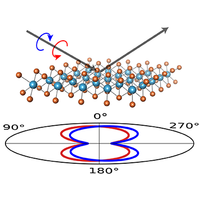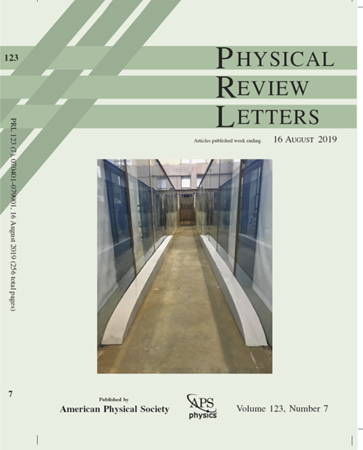Observation of Circular Dichroism Induced by Electronic Chirality
IF 8.1
1区 物理与天体物理
Q1 PHYSICS, MULTIDISCIPLINARY
引用次数: 0
Abstract
Chiral phases of matter, characterized by a definite handedness, abound in nature, ranging from the crystal structure of quartz to spiraling spin states in helical magnets. In a source of chirality has been proposed that stands apart from these classical examples as it arises from combined electronic charge and quantum orbital fluctuations. This may allow its chirality to be accessed and manipulated without imposing either structural or magnetic handedness. However, direct bulk evidence that broken inversion symmetry and chirality are intrinsic to remains elusive. Here, employing resonant elastic x-ray scattering technique, we reveal the presence of circular dichroism, i.e., polarization dependence of the resonant diffraction intensity, up to at forbidden Bragg peaks that emerge at the charge and orbital ordering transition. The dichroism varies dramatically with incident energy and azimuthal angle. Comparison to calculated scattering intensities traces its origin to bulk chiral electronic order in and establishes resonant elastic x-ray scattering as a sensitive probe to electronic chirality.

观察电子手性诱导的圆二色性
从石英的晶体结构到螺旋磁体中的螺旋自旋态,自然界中以明确手性为特征的手性物质比比皆是。在 1T-TiSe2 中,人们提出了一种不同于这些经典例子的手性来源,因为它是由电子电荷和量子轨道波动共同产生的。这可能允许在不施加结构或磁性手性的情况下获取和操纵其手性。然而,关于破碎反转对称性和手性是 TiSe2 固有特性的直接体征证据仍然难以找到。在这里,我们利用共振弹性 X 射线散射技术揭示了圆二色性的存在,即共振衍射强度的偏振依赖性,在电荷和轨道有序转变时出现的禁止布拉格峰上,圆二色性可达 ∼ 40%。二色性随入射能量和方位角的变化而显著不同。将其与计算散射强度进行比较,可追溯到 TiSe2 中的体手性电子秩序,并将共振弹性 X 射线散射确立为电子手性的灵敏探针。
本文章由计算机程序翻译,如有差异,请以英文原文为准。
求助全文
约1分钟内获得全文
求助全文
来源期刊

Physical review letters
物理-物理:综合
CiteScore
16.50
自引率
7.00%
发文量
2673
审稿时长
2.2 months
期刊介绍:
Physical review letters(PRL)covers the full range of applied, fundamental, and interdisciplinary physics research topics:
General physics, including statistical and quantum mechanics and quantum information
Gravitation, astrophysics, and cosmology
Elementary particles and fields
Nuclear physics
Atomic, molecular, and optical physics
Nonlinear dynamics, fluid dynamics, and classical optics
Plasma and beam physics
Condensed matter and materials physics
Polymers, soft matter, biological, climate and interdisciplinary physics, including networks
 求助内容:
求助内容: 应助结果提醒方式:
应助结果提醒方式:


